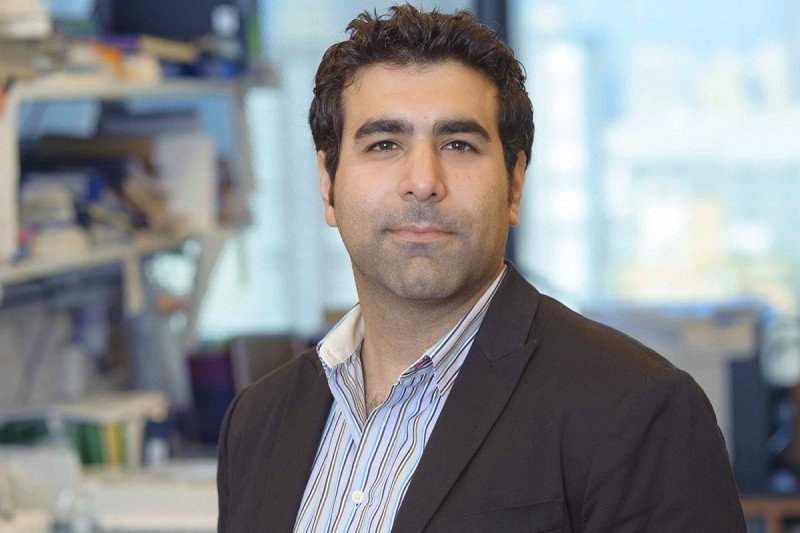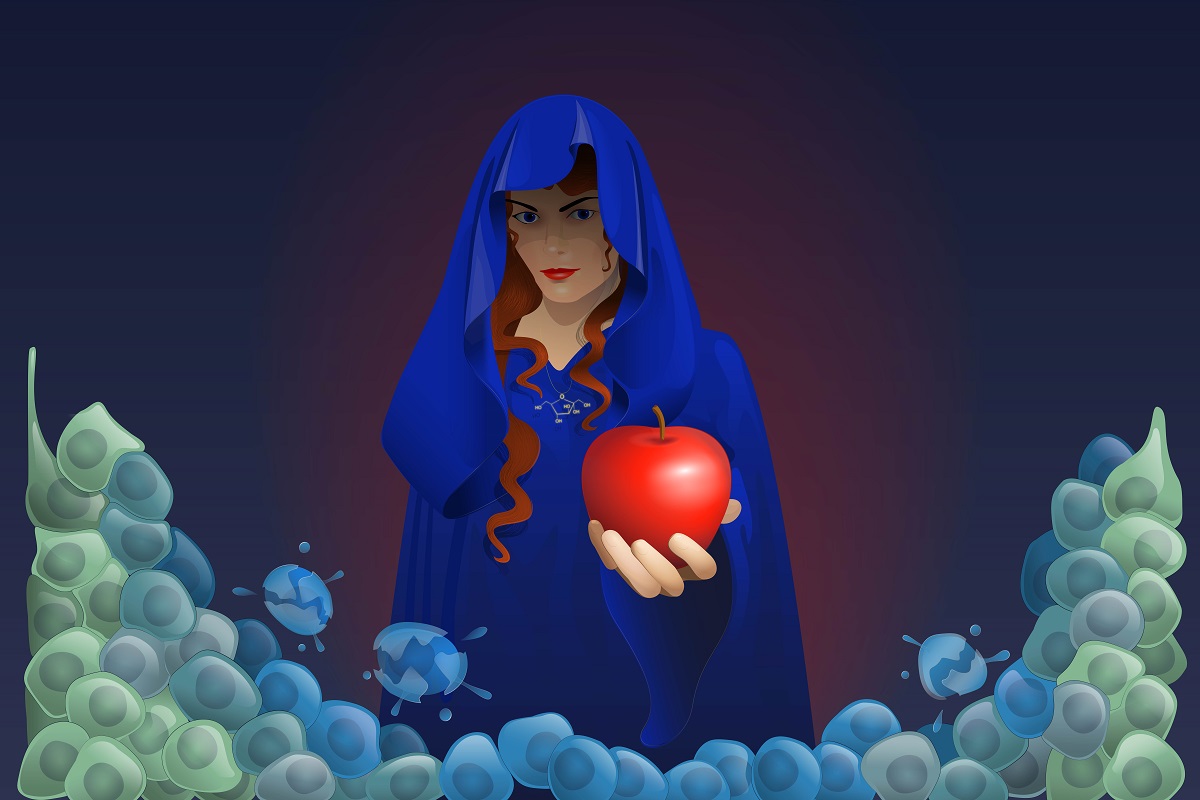
Most cells in our body are fueled by glucose, a type of sugar. Cancer cells need glucose even more than normal cells. In recent years, understanding the way cancer cells process glucose has become an intense area of study, especially at Memorial Sloan Kettering.
In food, however, sugar usually does not start out as individual molecules of glucose but as part of a compound called sucrose. The body breaks down sucrose into glucose and fructose, both of which are absorbed directly into the bloodstream. Fructose is then quickly used up by the liver or converted to glucose. Because of its fleeting existence in the body, fructose has largely been discounted by cancer researchers.
Now, an MSK team has found that acute myeloid leukemia (AML) cells can use fructose as an alternative fuel source when glucose levels are low and fructose is plentiful. What’s more, the researchers think that the way cancer cells do this — by switching to a different metabolic pathway — could be an Achilles heel that allows the cells to be targeted by drugs.
“This changes the way we think about metabolic pathways and the role of fructose in our diet,” says MSK biochemist and imaging specialist Kayvan Keshari, who led the research along with Sloan Kettering Institute cancer biologist Michael Kharas. “It raises the possibility that we could push cancer cells down a path they would not normally go in order to make them more sensitive to therapies.”
The researchers published their findings on December 22 in Cell Metabolism.
A Sucrose Surge
Over the last 50 years, food manufacturers learned that fructose, if carefully balanced with glucose, could create foods that people crave. High-fructose corn syrup, the most common form, is now ubiquitous in processed foods. Despite this increased presence in foods, scientists thought fructose didn’t stay around in the bloodstream long enough to build up to abnormal levels and possibly perturb metabolism.
Recent studies, however, have shown that fructose levels can be quite high in the blood. This has caused cancer researchers to take a closer look at how fructose might play a role in cancer. Dr. Keshari says the MSK researchers became especially intrigued after a small study showed very high levels of fructose in bone marrow samples from people with AML.
“We became interested because fructose is a sugar that really shouldn’t be present at those levels in the bone marrow, but it is,” Dr. Keshari says. “We wondered: What if fructose is present in high amounts around the AML cells? If so, can they use it, and what are they doing with it?”
To answer these questions, the research team designed a system to trace what happens to fructose after being taken in by the AML cells. They studied this intake in various leukemia cell lines (cells in a dish). Some had the ability to process (metabolize) fructose in the same way that they do glucose. Most leukemia cell lines, however, do not metabolize fructose completely through glycolysis — they must switch over to a different metabolic pathway.
It turns out the critical difference is a protein called GLUT5, which ushers the fructose into the cells. If GLUT5 levels are high, fructose readily enters the leukemia cells, and they can metabolize it as quickly as if it’s glucose. Cells with low levels of GLUT5 have to improvise, launching a series of chemical reactions called the serine synthesis pathway (SSP).
Forced March

The discovery that leukemia cells often switch to the SSP amid high levels of fructose reveals a promising therapeutic strategy. New drugs targeting this pathway are already in development to go into clinical trials to treat various diseases, including cancer.
“It raised the question: Could we create a situation where we force the cells to use the pathway — and then we block the pathway so that the cells die?” Dr. Keshari says.
In the study, the researchers used mouse models and human cells to show that leukemia cells using this pathway become very sensitive to the combination of fructose and the anti-SSP drugs. The hope is that this approach will have the same effect in people with leukemia.
“Most studies talk about how fructose is bad for you, causing things like obesity and diabetes, and possibly making cancer grow faster,” Dr. Keshari says. “This shows that if you understand the biochemistry — exactly how cells metabolize things — you might actually use this nutrient as a drug or for diagnostic purposes.”





